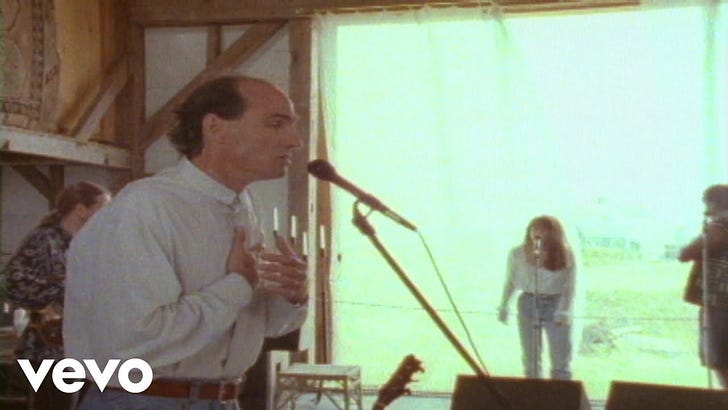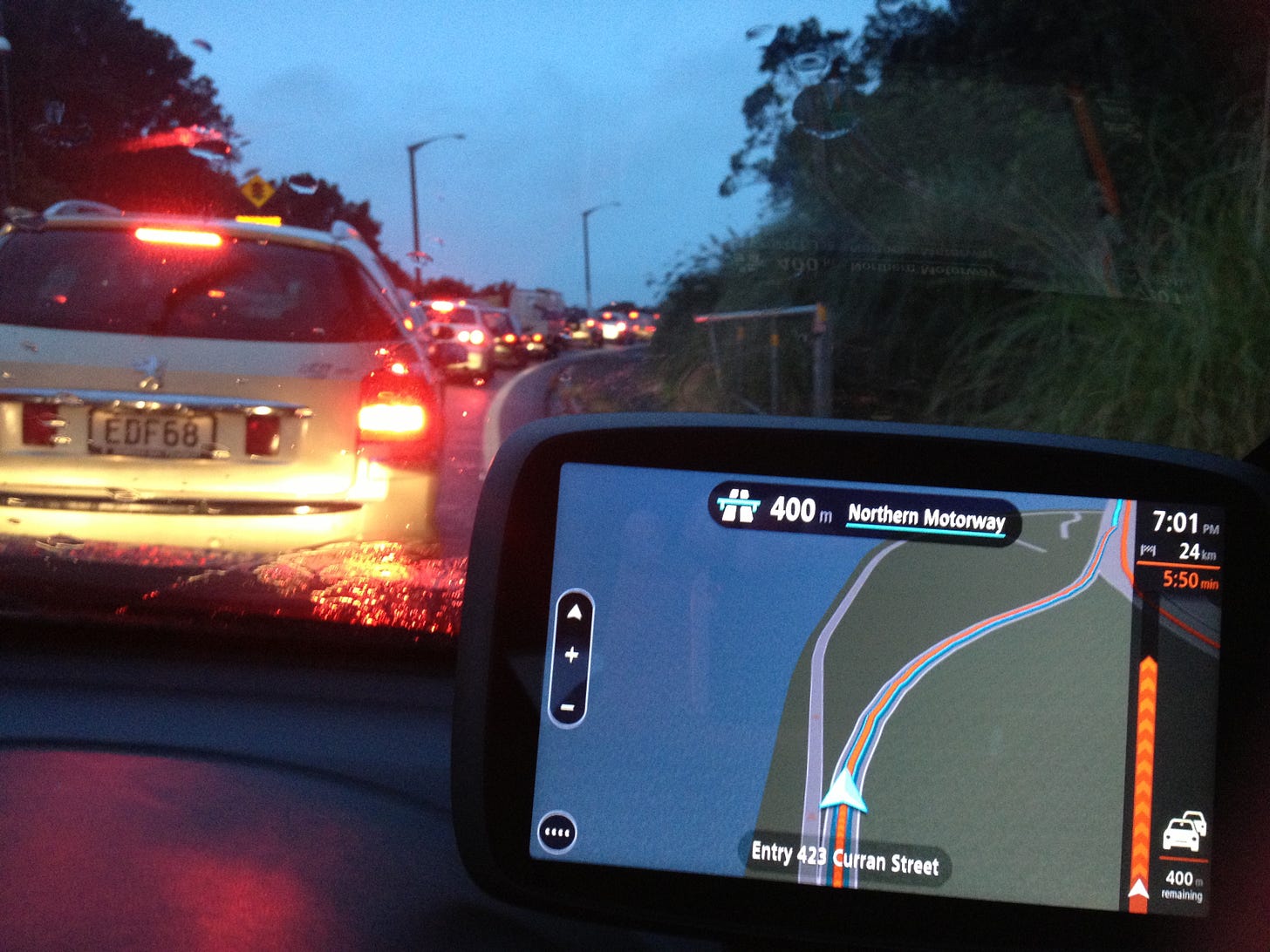I remember when I was working at Tait Electronics and we opened up an office in Dallas, TX. This was in the late 1980s. They told me that many people spent 3 hours a day commuting to work. I felt really lucky to be living and working in Auckland, New Zealand. James Taylor wrote the song Traffic Jam ten years earlier.
Remember rush hour? No not the movie, but the commute to the city. I was an evangelist of car navigation and the introduction of real-time traffic information. I argued with people who said, “I know where I’m going, I don’t need a box to tell me, especially one that adds $6,000 to the price of my car.” That’s what it cost back in the aughts.
My argument at the launch of Holden’s (GM) car navigation, at the national motor show at Mystery Creek in Hamilton, was, yes, but you don’t know what has happened that will try to stop you from getting there. Then the stories came out; people said they avoided Auckland like the plague. “You get in the wrong lane, people won’t let you back, and you end up totally lost.”
Do you remember the Mutton Birds, singing Dominion Road?
Dominion Road is bending,Under it's own weight, Shining like a strip Cut from a sheet metal plate, Cause it's just been raining.
I wasn’t sure if I wanted to tell this story, because, it will sound like an ‘I told you so’, and it is. As I have been many times, I was too early with my predictions of the future, but I also felt like we were almost too late.
I won’t go into detail. A number of us realised that the Nash Equilibrium would result in many more traffic jams if we didn’t do something. At Geosmart we pioneered Real-Time Traffic Information. We provided RTTI across many channels including radio, web, social media, RSS feeds and RDS-TMC. Car navigation brands incorporated our information into their systems. I continued this work after TomTom bought GeoSmart and excluded their competitors, joining NZTA.
The challenge, I told decision-makers, was that car navigation software needed to incorporate the cause of traffic congestion. We had to share our expectations as to how long the incident was going to take to clear. We needed to avoid Nash by directing traffic to optimised routes identified in our SOPs, to reduce traffic jams. Instead, we made it easy for routing apps to send vehicles onto minor roads. Here’s an example of what happens when you do that. Would a speed hump solve this problem?
I was a bit of a lone voice. Maybe not lone, but perhaps one of the most persistent and to some, annoying. This was information that our traffic planners hadn’t been taught about in university. Despite my team winning many awards for innovation, the corporate climate changed and innovation was discouraged, due to circumstances having nothing to do with us.
I so wish I had Alexandre Bayen of UC Berkley to help me tell the story because we still have it wrong. In fact, IMHO we are making things worse. We are doing exactly what he explains we shouldn’t do. We are building thousands of expensive speed bumps and humps to slow down traffic on B and C roads that car navigation systems blindly push us into.
As he says, and I said more than 10 years ago, we need to be integrating our systems with Google (we were just starting to when the innovation team was disbanded), Waze, HERE, TomTom and others.
Many of us knew that people are like lemmings, who blindly follow each other when gridlock happens. On the Transport Operations Centre’s video wall we would watch people drive off the motorway, reverse, or turn around on the verge and drive back to the previous offramp. Surprised? We weren’t. We saw it often. We could predict it. One person would do it, and dozens would follow and cause a new unplanned event. We weren’t allowed to take pictures or videos, but we saw some doozies!
Today, we still haven’t acknowledged that collaboration and sharing of intelligence with routing companies is the solution. Instead, we are facilitating full employment, engaging contractors to build speed humps as fast and wherever we can. I say we because we voted for the leaders who are allocating funding for this. It is an example of a solution answering the wrong question. I’ve written before, about when you have a hammer, everything looks like a nail.
One of my favourite colleagues at NZTA used to have a decision-making catchphrase. “So what?” Maybe if we asked this more often, our ‘experts’ would realise that they are asking the wrong questions. Maybe they should be using the What? So What? Now What? reflective model.
Wouldn’t it be so much cheaper if we integrated our communications with the routing applications? We could make them the delivery mechanism for our SOPs. Why would they do that? Because their customers would get the best routeing experience possible. There would be fewer secondary accidents. Others would also embrace this information into their algorithms and traffic would flow better.
There will never be the perfect solution, but I do believe that if we don’t begin integrating our information, SOPs, and intelligence with the services the public relies on for routing guidance, in another 50 years, James Taylor’s song will still be relatable.





